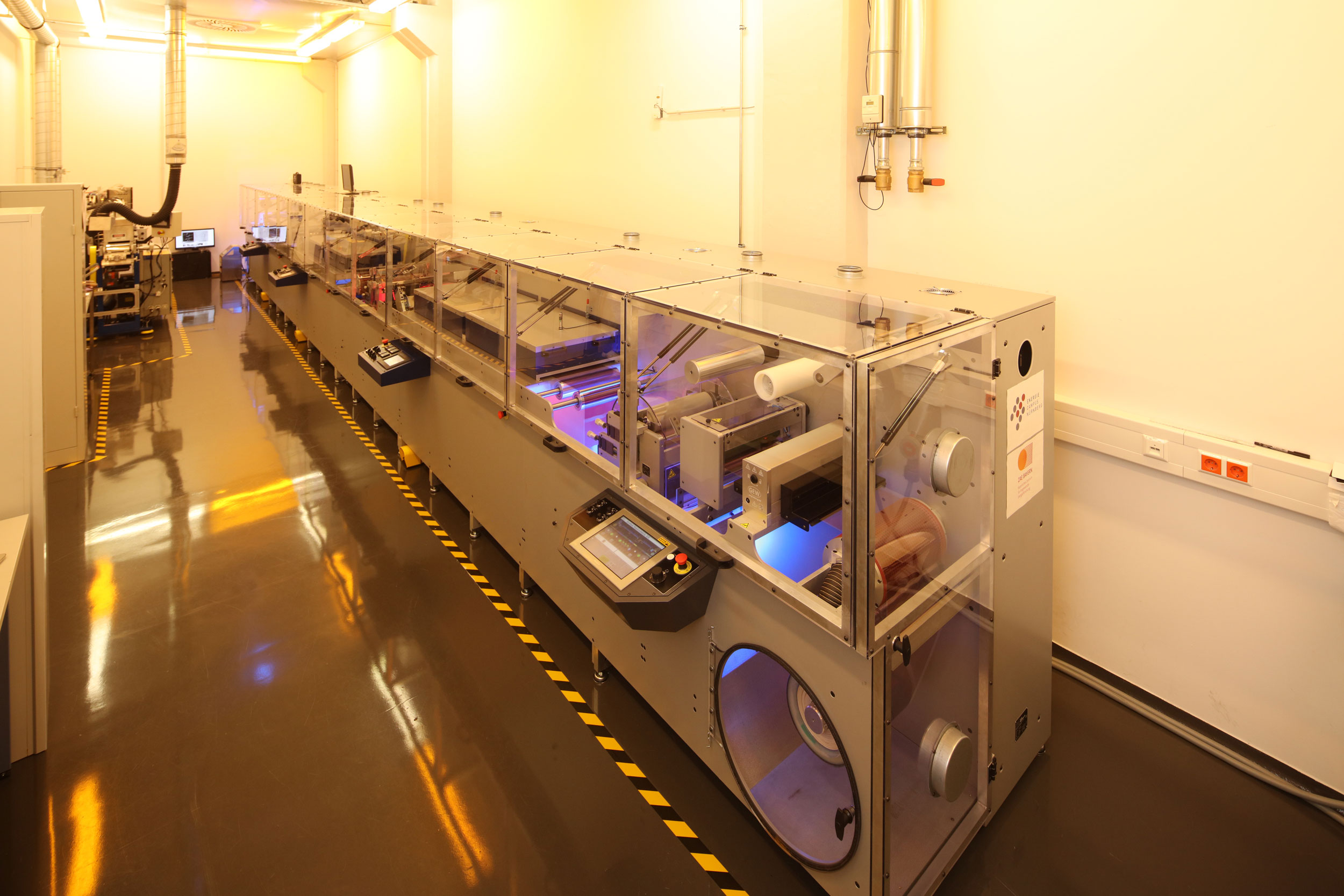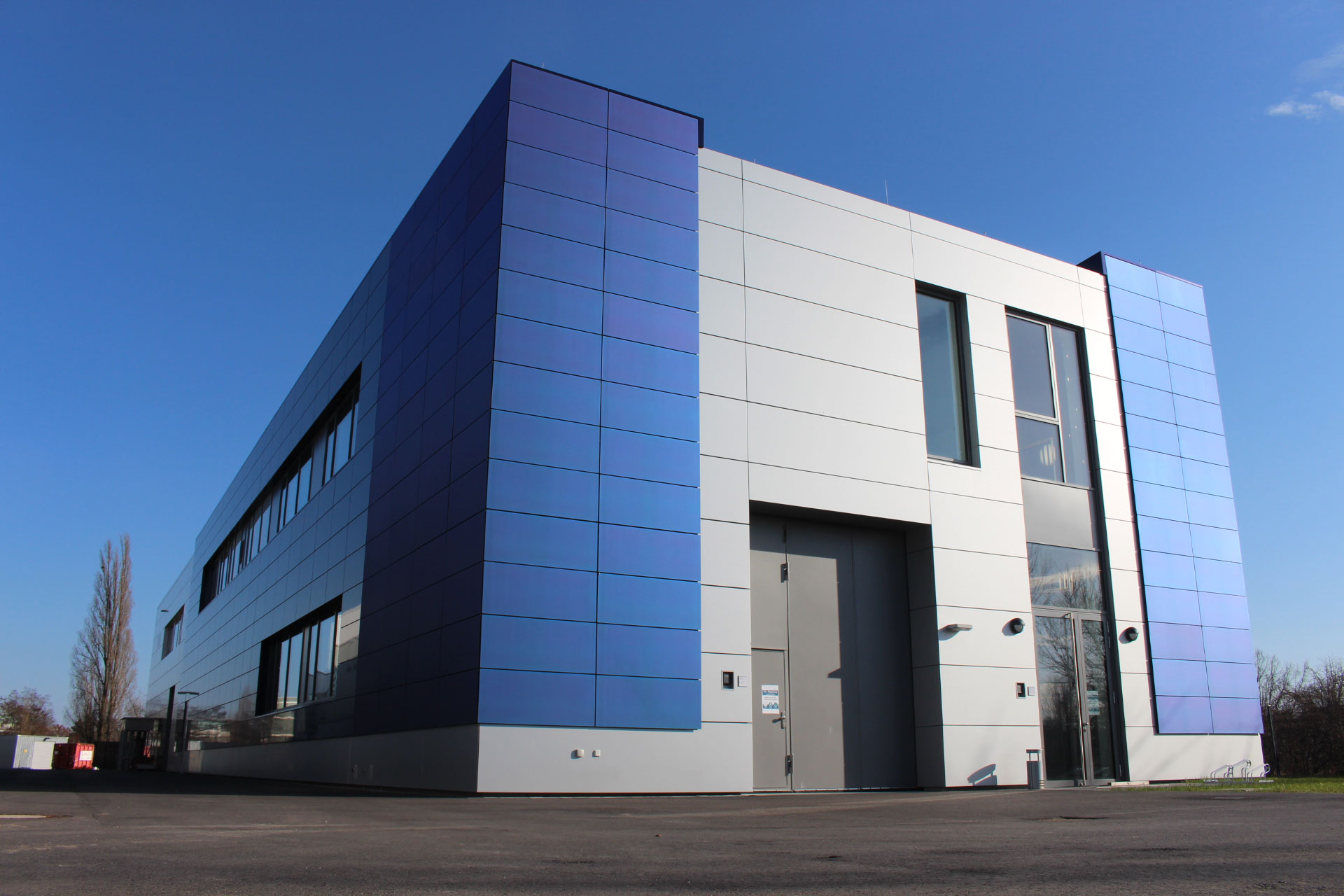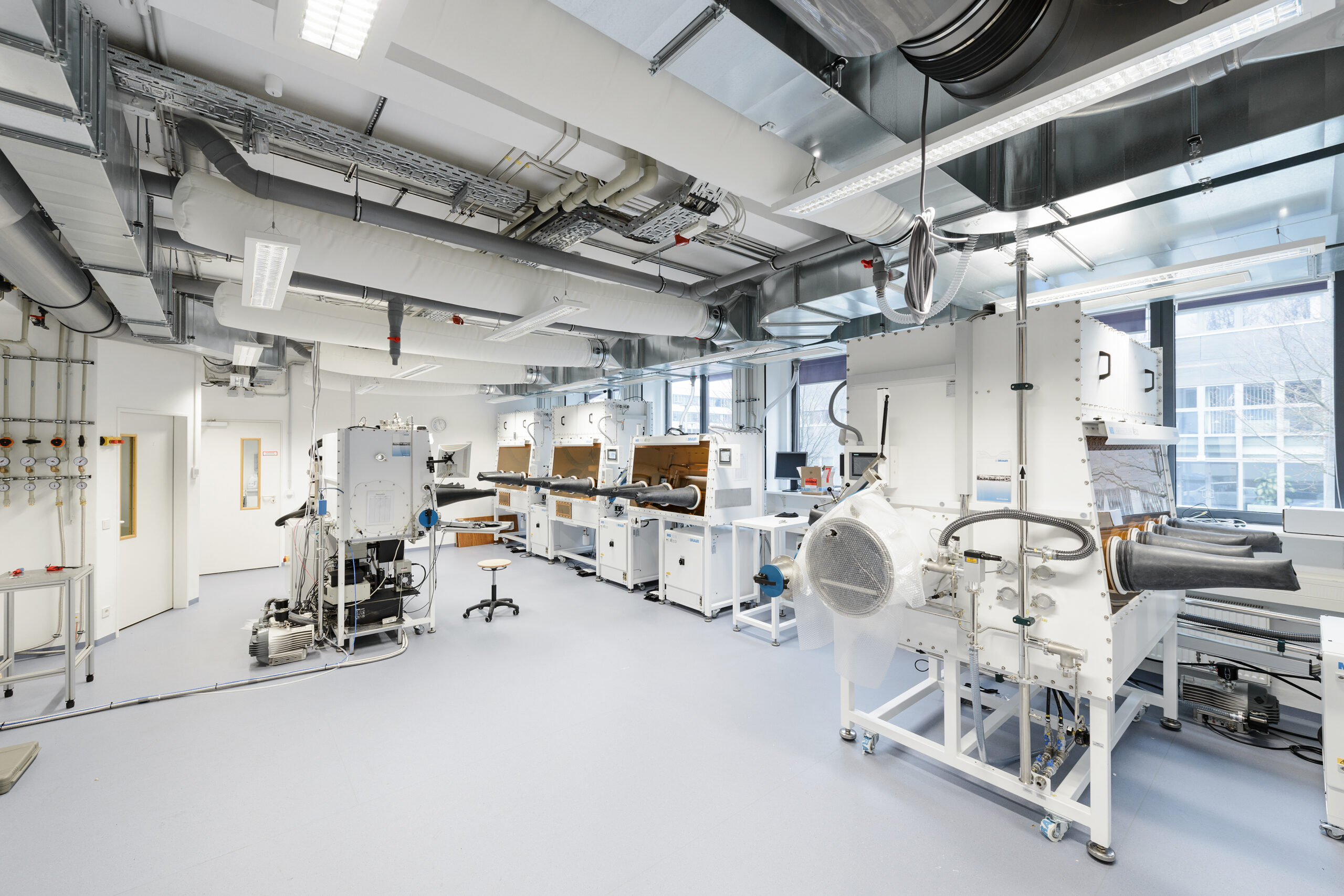Experience Helmholtz
Solar TAP brings together Helmholtz infrastructures for advanced materials and technology in order to develop multi-benefit PV solutions. This innovative setup allows for the targeted development and refinement of PV technologies.
Industry partners can interact with Solar TAP as if it were a single, cohesive laboratory. This integrated approach ensures efficient collaboration, rapid prototyping, and accelerated innovation in PV technology development. With Solar TAP the journey from concept to market-ready technology is streamlined and optimized, driving the future of sustainable energy solutions.
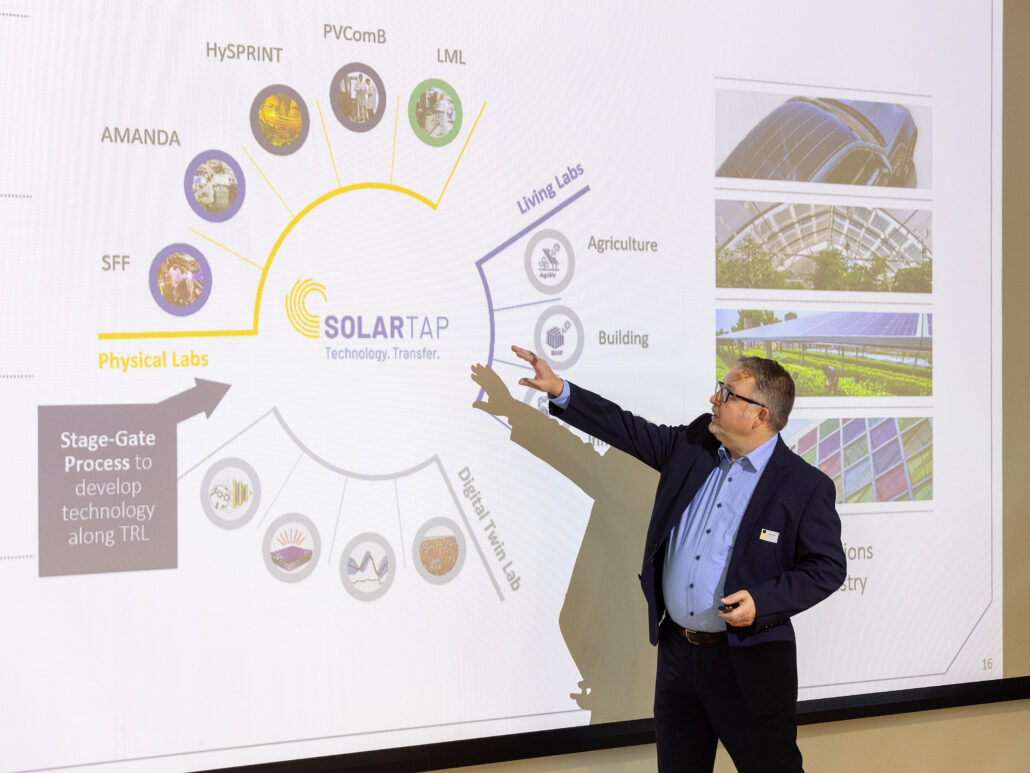
Solar TAP Infrastructure
Visit our Solar TAP Infrastruture
The Solar TAP platform combines some of the world’s leading research infrastructures to advance, simulate, and demonstrate emerging photovoltaic technologies. This unique platform offers flexible use of state-of-the-art facilities.
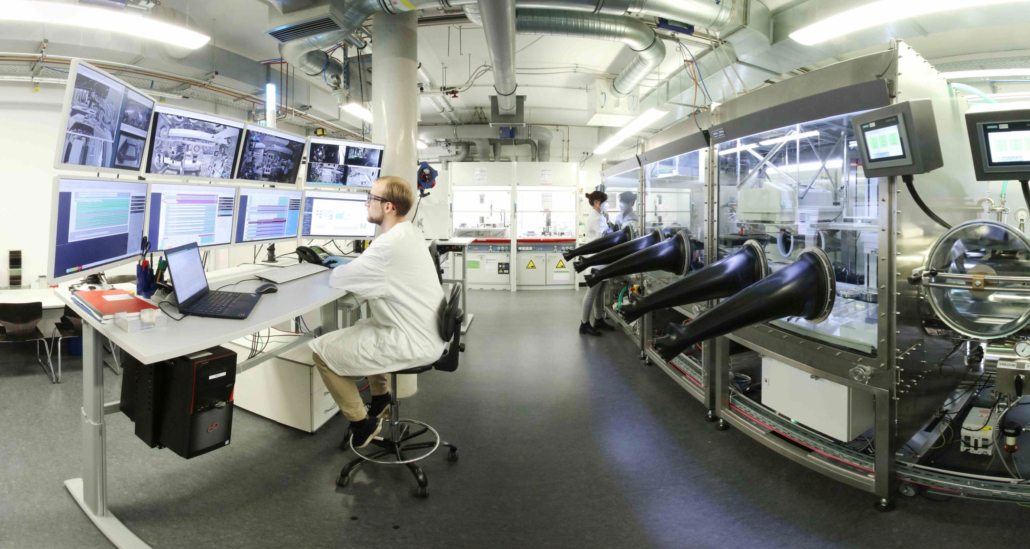
AMANDA Lab
The AMANDA Lab is an advanced, automated platform that uses AI to accelerate the synthesis, screening and optimization of materials for printed solar cells, including perovskite and organic photovoltaics.
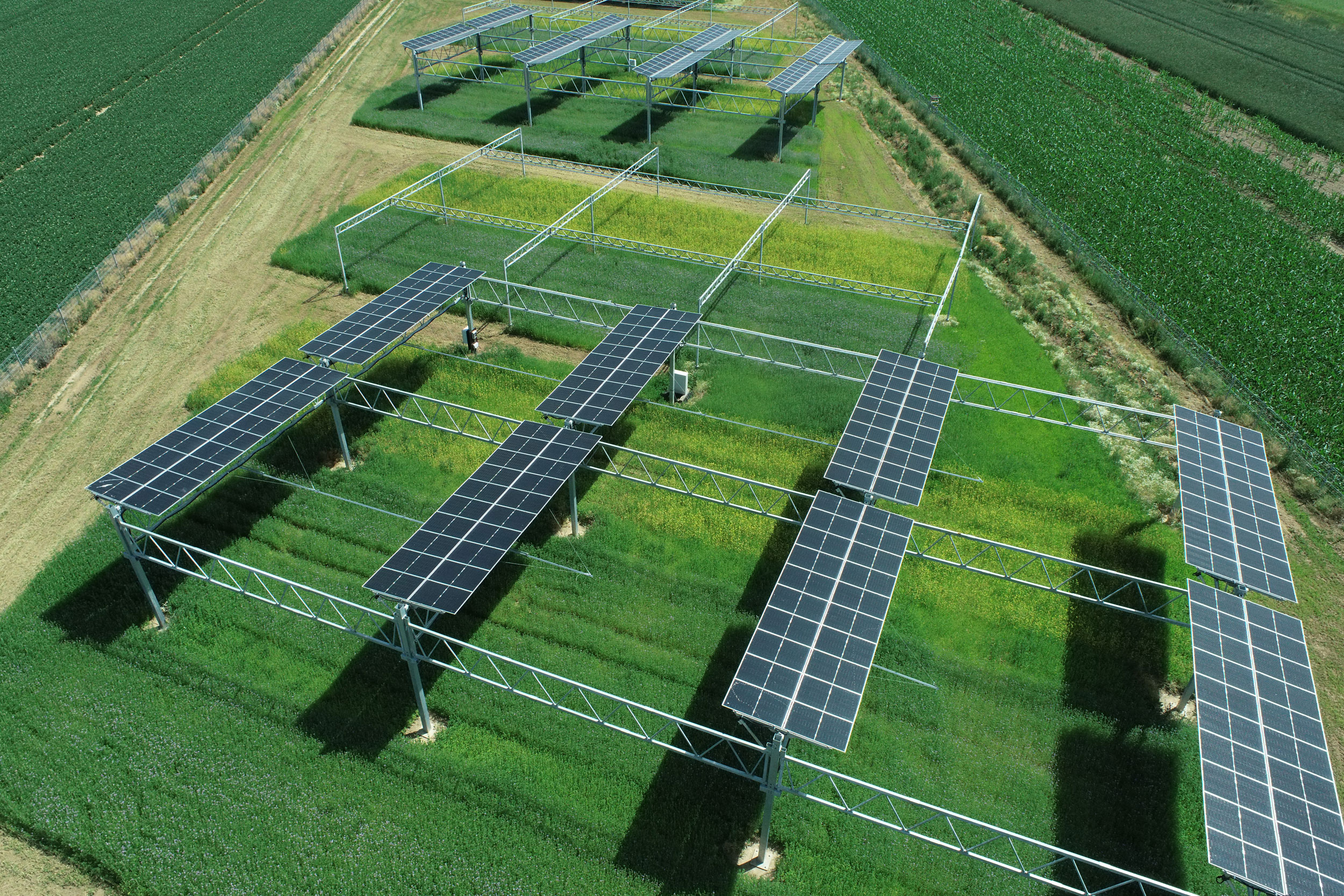
Agri-Food-Energy Park
The Agri-Food-Energy Park at FZJ integrates photovoltaic and agricultural technologies promoting collaboration across industries with diverse PV installations on two hectares.

PVcomB Lab
The PVcomB Lab focuses on developing monolithic CIGS and perovskite tandem solar cells with an emphasis on CIGS bottom devices and flexible substrates.
